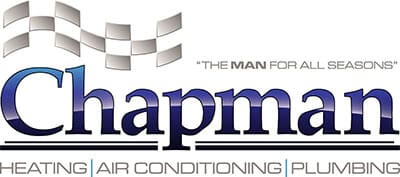Furnace Not Lighting? Here Are the Signs of an Ignitor Problem

When temperatures dip below freezing in Indianapolis and across the Central Indiana area, homeowners rely on their furnace or other heating system to keep them warm and comfortable. But like all appliances, furnaces will break down over time. Unfortunately, this can sometimes happen during the worst possible time, such as the middle of the night when it’s freezing outside.
Sometimes, your furnace only requires a quick and simple fix. However, there are other times when the problem is a little more serious, such as a faulty furnace ignitor.
What Is a Furnace Ignitor?
Without the ignitor, your heater won’t blow hot air. It’s a critical part of the furnace system since it is responsible for lighting the burner that starts the combustion process that turns fuel into heat. In older units, the furnace ignitor is a traditional pilot light. Most newer furnaces are instead equipped with an electronic ignition system for safety reasons.
Once the thermostat kicks on, you might hear a “click” from the furnace. This is the sound of the spark that “ignites” the gas connected to your heater.
A faulty ignitor is one of the most common furnace problems homeowners encounter, with a typical lifespan of about seven years for a furnace ignitor. Fortunately, when it is time, you can replace the ignitor without replacing the whole appliance.
5 Signs That Your Furnace Ignitor Is Bad
The sooner you address an issue with your furnace, the better. Here are a few indications that you have a faulty ignitor.
1. The Furnace Won’t Turn On
As the temperature starts to drop and you notice that your furnace doesn’t kick on despite how cold it is in your house, there could be a problem with your ignitor.
Before calling in an HVAC expert, you can try the following to rule out other causes:
- Make sure the thermostat setting is on “heat” instead of “cool.”
- Adjust the temperature so that it is set high enough to tell the furnace to blow hot air.
- Go to your breaker box to make sure the switch connected to your furnace hasn’t tripped to “off.”
If all of this is correct, you might have an issue with the ignitor and will need to call a furnace repair company to come assess the unit for you.
2. No Cold Air
If your furnace is running, but all you feel is cold air coming from the vents in your home, that’s another major warning sign of an issue with the furnace’s ignition. Remember that without a functioning ignitor, it’s impossible to create heat with no spark to start the combustion process.
Double-check your air handler and your furnace. If the air handler is on and your thermostat is set to heat, but the furnace isn’t kicking on, your ignitor failing to light the fuel is most likely to blame.
3. Your Furnace Turns On and Off
When a furnace turns on and off repeatedly without staying on long enough to adequately heat your entire home, it’s referred to as short cycling. It is a safety feature that is triggered when the furnace senses a potential problem.
Short cycling can be caused by a number of factors, including a faulty ignitor. As the ignitor wears down, it can’t hold a charge long enough to heat the furnace air, so it turns off. After a brief period of time, the unit tries to start again.
Over time, short cycling can negatively impact your furnace as a whole, which is why it’s critical to get it looked at by an HVAC professional immediately.
4. Tripped Circuit Breaker (More Than Once)
If you’re experiencing continuous trips in the circuit breaker after the furnace turns on, this is a sign of a voltage issue with your ignitor. Specifically, it means that the ignitor might be pulling too much electricity, which causes the breaker to trip over and over again.
Not only is repeatedly tripping the breaker dangerous for your furnace, it can have a long-term impact on the electrical system in your house as a whole. It’s best to leave the breaker set to “off” until the furnace issue is assessed and repaired. This is a situation that deals with high-voltage electricity, so it’s safest to leave it in the hands of a professional.
5. Ignitor Isn’t Glowing
When the furnace turns on to start a cycle, the electric ignitor should glow. If there isn’t a glow, that’s a major indicator that there is likely a problem with the ignitor. In this case, it is best to call a trusted HVAC company for help because a problem with the electronic ignition means there isn’t power to turn on the furnace.
Common Reasons a Furnace Ignitor Fails
There are many things that can cause your furnace ignitor to stop working. It is a complex component with a few safety features in place to prevent major issues. Here are some of the most common causes of problems with your furnace ignitor:
- Loose electrical connections that heat the ignitor
- Damage to the ignitor or electrical connections from a power surge
- Improperly sized ignitor
- A build-up of carbon monoxide near your boiler (this triggers a safety feature that prevents your ignitor from heating up)
- Detection of a gas leak (again, this triggers the safety feature to prevent your ignitor from lighting)
- Damage and loss of continuity from constant use and old age
No matter the reason, the best thing to do if you suspect an issue with your furnace ignitor is to call in a professional, like the Indianapolis furnace experts at Chapman.
Don’t suffer in your cold home any longer than necessary. Contact Chapman Heating, Air Conditioning & Plumbing for help repairing your furnace ignitor.





